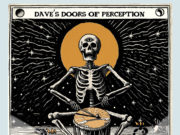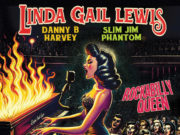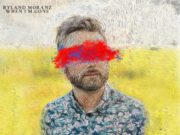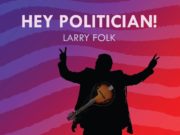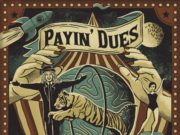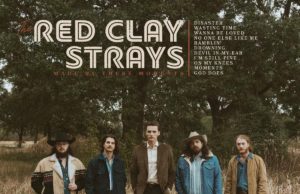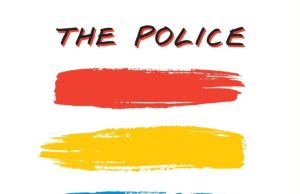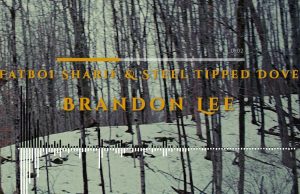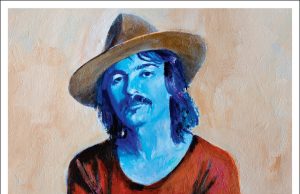 My partner and I are huge Last Podcast On The Left fans. As such, not only do we try to listen together, but also get routinely prompted to go on serial-killer Wiki rabbit holes, documentary binges and trips to the bookstore.
My partner and I are huge Last Podcast On The Left fans. As such, not only do we try to listen together, but also get routinely prompted to go on serial-killer Wiki rabbit holes, documentary binges and trips to the bookstore.
One thing we haven’t done is investigate how the activities and motives of these killers have been presented, debated or analyzed in song. So, I went on a hunt for such songs in my record collection and beyond. Being careful to avoid the low-hanging fruit, I decided to not simply include songs with a particular killer’s name or nickname as the sole title. Also, no metal or hip-hop because there are just so many. I also just stuck with household names, or as LPOTL calls them: Heavy hitters.
David Berkowitz — aka Son Of Sam — was convicted of eight separate shootings in New York in the 1970s that included the deaths of six people. For a while he claimed the Hall & Oates hit Rich Girl was the inspiration for his killing spree. He was lying. The song came out after the killings began. But Hall & Oates were well aware of being connected to Berkowitz and penned Diddy Doo Wop (I Hear The Voices) as a response. It’s about a killer being inspired by an earworm and name-checks Charles Manson as well:
“Charlie liked the Beatles
Sam, he liked Rich Girl
But I’m still hung up on the Duke of Earl.”
One of the most popular serial killers to craft songs about is Ted Bundy, who kidnapped, raped and murdered women in the 1970s. There are 20 confirmed victims, but he confessed to 30 and is suspected of more than 36 murders. British electronic rock group The Cassandra Complex took a very critical look at Bundy, particularly his decision to become a born-again Christian, in their song What Turns You On?:
“I used to capture girls
I liked to see them dead
But now that I’ve been caught
I’ve found Jesus instead.”
Myra Hindley and Ian Brady were known for the Moors Murders, which saw the deaths of five children in the mid-1960s near Manchester. This is, of course, is the hometown of Morrissey, who co-wrote Suffer Little Children for The Smiths’ debut album after reading a book about the murders.
One could argue that Charles Manson’s real desire was to be a rock star. The late-’60s cult leader was tight with Beach Boys drummer Dennis Wilson for a while — the band even refashioned the Manson song Cease To Exist into Never Learn Not To Love in 1968. The Manson Family murders took place in an area which was literally close to home for many musicians and artists. Neil Young met Manson once and wrote Revolution Blues once charges were laid.
Ed Gein influenced several key cinematic horror villains, namely Norman Bates of Psycho, Buffalo Bill of The Silence of The Lambs and Leatherface from The Texas Chainsaw Massacre. Gein not only murdered two women, but he also exhumed many others and — in tribute to his mother — made clothing, masks, furniture coverings and other household items out of their skin. As a side note, you could say the Talking Heads song Psycho Killer is also about Gein, because Tina Weymouth wrote the lyrics after watching Alfred Hitchcock’s Psycho. The Blind Melon song Skinned is one of few songs about Gein not performed by a metal band. Find it on their second album Soup.
The Rolling Stones were influenced by Albert DeSalvo — evidently the Boston Strangler — when they wrote Midnight Rambler. Pearl Jam wrote the song Dirty Frank about an imagined background of their tour bus driver, while they were out on the road with Red Hot Chili Peppers. Their driver wasn’t actually a serial killer, and the crimes outlined in the song’s lyrics are primarily those of the Milwaukee cannibal Jeffrey Dahmer.
Quite a few of the songs about John Wayne Gacy make reference to his time as either Patches or Pogo The Clown. There’s an illustration of him on the cover of Sufjan Stevens’ Come On Feel The Illinoise album. The track about him on that album bears his name, so we’ll go instead with Clownin’ Around by Deer Tick. Here’s the end bit dealing with his lethal injection in 1994:
“Oh, Lord you know I would repent
But now the devil he speaks for me
And the icy needle kisses my veins
As I kiss my dear sister goodbye
Now as I descend into the final flames
Is my turn to die.”
As a kid, the first I ever heard of Jack The Ripper was in an episode of Fantasy Island. It would have been around the same time that Phil Lynott and Thin Lizzy wrote Killer On The Loose for 1980’s Chinatown:
“Some people they call me Jack
Some people they call me insane
I’m looking for somebody
And I don’t even know her name.”
Camper Van Beethoven also does a first-person narrative on the Unabomber-inspired Militia Song, which is about Ted Kaczynski:
“Studied mathematics in Berkeley
Now I don’t like society
Got me a little old shack in the woods
Gonna mail you out some explosive goods.”
Miley Cyrus teamed up with childhood hero Billy Idol for her ’80s-themed album Plastic Hearts. Their song Night Crawling is clearly influenced by Richard Ramirez, known as the Night Stalker. Ramirez killed more than 15 women during the early 1980s.
Gary Ridgway, known as the Green River Killer, is still serving several life sentences on nearly 50 first-degree murder convictions in Washington state from 1982 to 1998. Before Mudhoney, Mark Arm was in the band Green River, named after the local serial killer who was still at large. The title track from their first EP Come On Down is about the murders.
From the 1970s to the 1990s Dr. Harold Shipman is believed to have been responsible for the deaths of about 250 people. He was convicted in the deaths of 15. He hanged himself in prison in 2004. What About Us? by The Fall is about Shipman, considered to be the most prolific serial killer of all time.
Not far away, from 1975 to 1980, Peter Sutcliffe operated as the Yorkshire Ripper. He has 13 confirmed kills but is suspected of killing more than 22. Leeds United by Luke Haines is about Sutcliffe:
“You’re on a mission from God
It’s what the weekend’s all about.”
Artist Lingua Ignota (Kristin Hayter) used audio of an interview with serial killer Eileen Wuornos for her song Disease of Men.
“I am the disease of men
I am the wasp elite.”
The video (up top) is pretty terrifying. Check it out. And here’s a playlist to freak out any hitchhikers you may pick up.
• • •
Area Resident is an Ottawa-based journalist, recording artist, music collector and re-seller. Hear (and buy) his music on Bandcamp, email him HERE, follow him on Instagram and check him out on Discogs.


